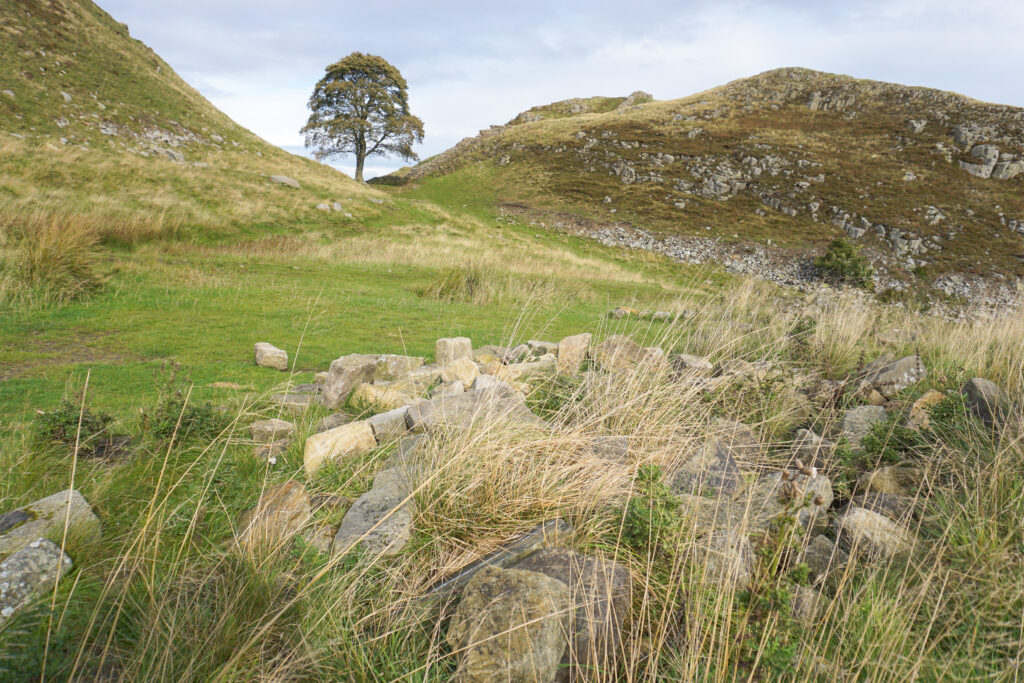
At some point during the night of 27 September 2023, in the middle of a storm, someone hiked up to Sycamore Gap, started up a large chainsaw and cut down one the UK’s most famous and most loved trees.
The Sycamore tree that stood in this natural dip in Hadrian’s Wall was over 300 years old. And yet, in less than an hour it was gone in an act of the most senseless vandalism. As I write this, police investigations are ongoing, and it is not yet known why the person responsible did this. Although whatever reason they put forward, surely there is nothing which could justify such a pointless act.
Sitting in a picturesque natural dip not far from Steel Rigg, it was inevitable Sycamore Gap would capture attention. In a world of the perfect “gram”, the sycamore was a ready made image. The tree garnered worldwide fame after it featured in the 1991 film, Robin Hood: Prince of Thieves (albeit in a truly bizarre geographic twist which saw our protagonist en route from the White Cliffs of Dover to Nottingham Forest, via Hadrian’s Wall…). The outpouring of shock, anger and grief at its felling has been considerable.
It might seem trivial – even indulgent – to be mourning a single tree when there is such acute human suffering in the world. And clearly many people are being forced to endure far, far, far worse horrors.
But seeing the Gap without its famous sycamore for the first time, made me reflect on what the loss of this wonderful tree means. It was bizarre to see a landscape I know so intimately, so fundamentally altered, that it took my brain a few minutes to really recognise where I was.
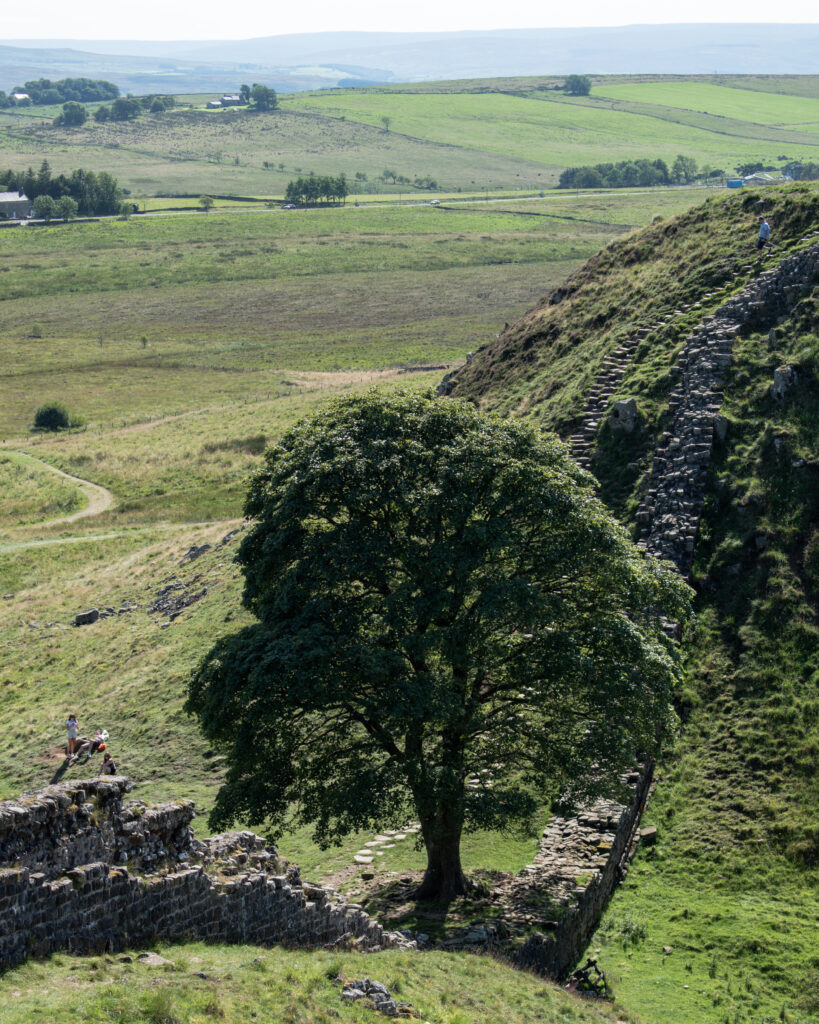
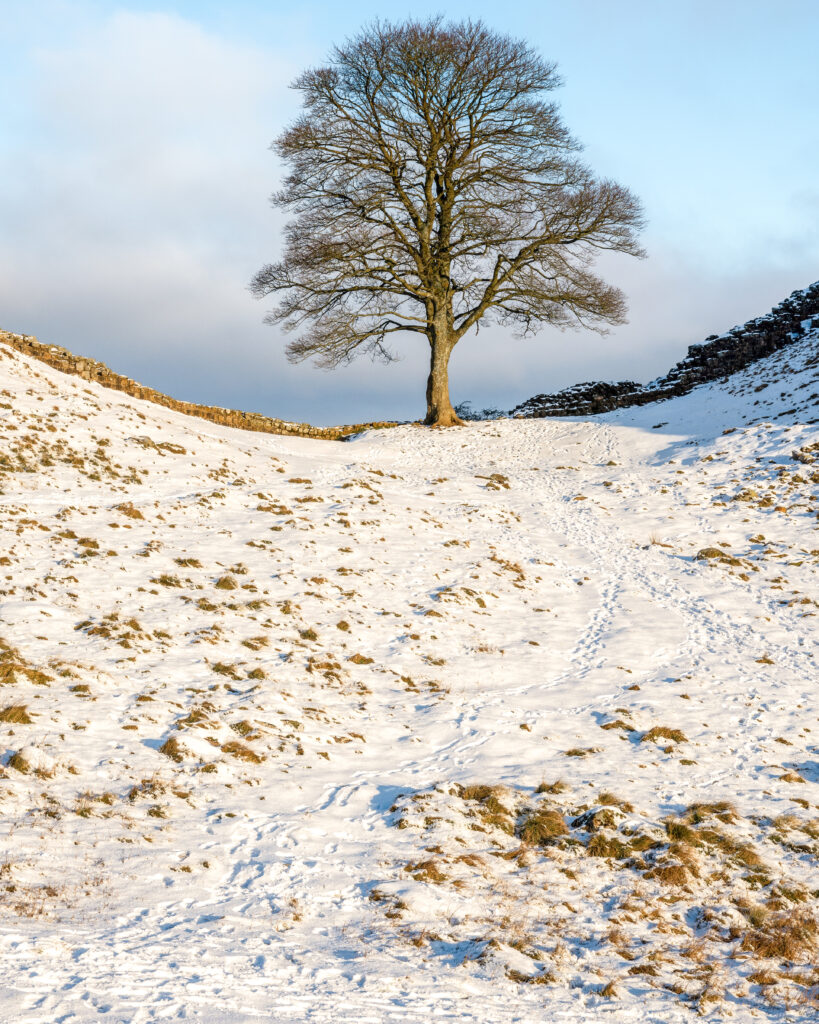
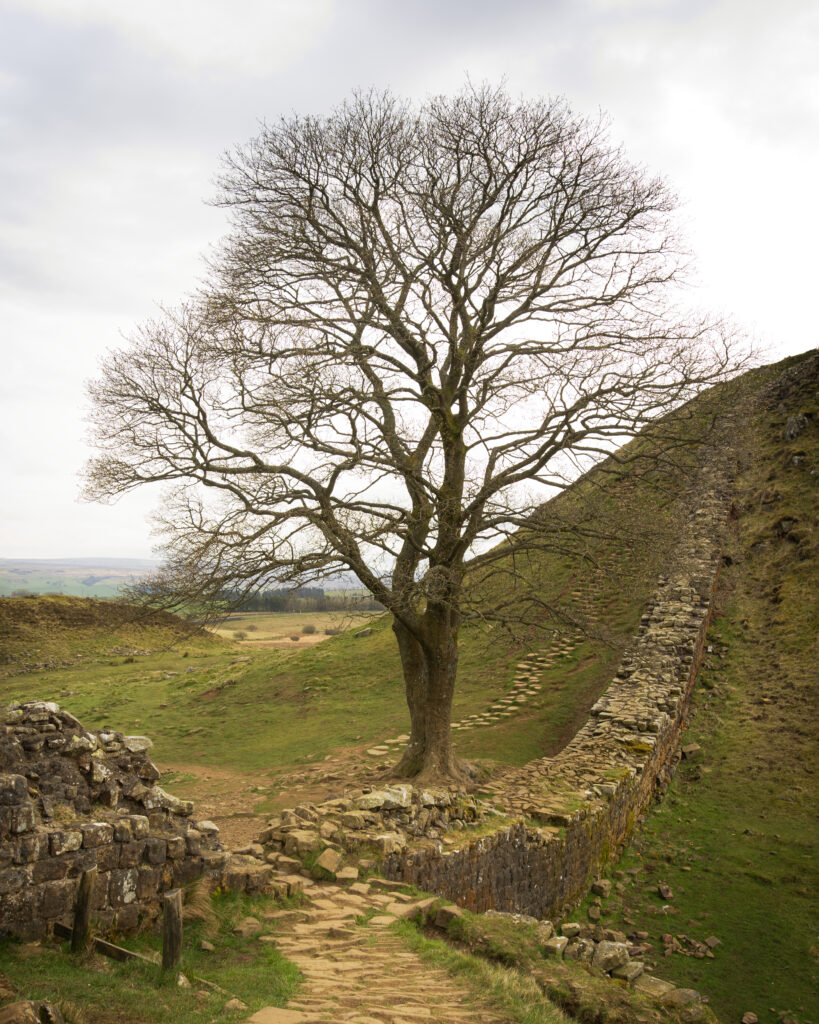
A SYMBOL OF NORTHUMBERLAND
Sycamore Gap was an instantly recognisable image of this beautiful county, and one that visitors flocked to see. Similar to the sense of loss the people of Paris felt when Notre Dame burned down in 2019, Sycamore Gap was enmeshed into the identity of many of Northumberland’s residents.
Someone felt such malice that they thought this ugly act was worth the skill, knowledge and considerable effort to cut it down. And the fact that they chose to do this, knowing the importance of this place and how deeply cherished it is, makes it even more incomprehensible.
IDENTITY AND PLACE
Something about your sense of place becomes more fluid when an expat or living overseas. As an expat, where “home” is, is often a complicated question. Depending on the circumstances and who is asking, it could be my house in Muscat, the UK in general, London, or Scotland and Northumberland where my family still live.
There are lots of places that are special in our lives. Places that mean we say, “I’m home”. Places we go to celebrate. And places we go to grieve. To remember those we love deeply, but who are no longer here with us. For me, Sycamore Gap has – at various times throughout my life – been all of these things.
I grew up with this tree. Sycamore Gap and the landscape around it is as much a symbol “home” for me, as anything else can claim to be. Every time I visit my family, regardless of the weather or season, I head up to Hadrian’s Wall, and always the section from Steel Rigg and along to Crag Lough to take in Sycamore Gap. It is almost a ritual to mark coming home.
In the wake of the tree’s felling, I wanted to find some photos to share in order to mark its loss. It was striking to see that for many years, almost every time I have gone for a walk on Hadrian’s Wall, I have taken a photo of Sycamore Gap. Despite having taken hundreds before, there was something about it that just begged to be captured once again. I know I am not the only one with endless photos of “the Gap” tucked away over the years in their camera roll. And so the tree’s destruction has, for many, felt like the loss of a treasured family friend.
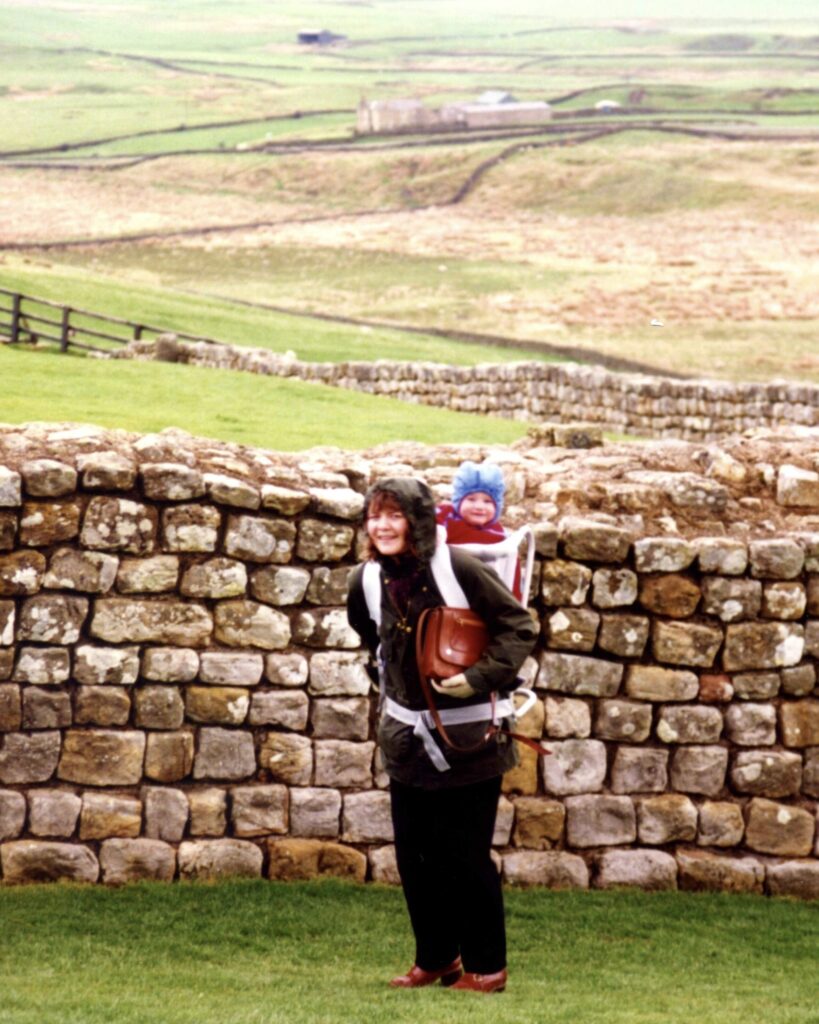

I have photos of me as a small baby in a backpack carrier, my parents smiling into the camera having hiked me up to this famous spot. Photos grinning with cherished childhood friends, catching up after months away from home. Photos that chart the evolution of my relationship with The Husband. These photos, and the tree itself, bear witness to those who have come in and out of my life, the constant and the fleeting, sharing this spot with generation after generation. I had simply taken it as a given that it would continue to be a constant feature of my life, and that of future members of my family, for many more hundreds of years to come.
For The Husband and I, this stretch of Hadrian’s Wall is a deeply special place for the most personal reasons of remembrance and grief. And I am far from the only one for whom Sycamore Gap has been a backdrop to the important moments in life. Countless proposals, family outings and scattering of loved one’s ashes have taken place under its leafy canopy and atop its gnarly roots. The violence of the tree’s felling has intruded on the peace of this wild landscape. It is hard not to feel as though these personal memories have been somehow violated as the malice and vitriol of the outside world had so suddenly come crashing into this precious landscape. The tree did not simply fall in the storm. It was deliberately cut down.
A WIDER LEGACY?
And so my grief for the loss of the sycamore is also, in part, due to my fear about what it says about our relationship and attitudes to the natural world. It is worth pausing to reflect on the grim irony of the fact that the same day Sycamore Gap was left just a Gap, the National Trust released a study highlighting that the British Isles have become one of the most nature depleted countries on Earth.
And yet, the outpouring of grief at the Sycamore’s felling might just offer a slither of hope. It is interesting that a tree that had only been in this spot for a couple of hundred years has made such an indelible print on the landscape around it. After all, set against the nearly two thousand year old wall it stood alongside, it was but a mere blip in time. Perhaps it is that the tree was a living being. Hadrian’s Wall is of course, incredible. But it is inert, a fixed moment of history.
The idea of something that has stood witness to hundreds of years of history around it is appealing in a time of change and uncertainty. The film released by the National Trust the day after they removed the remains of the tree, is the most watched film they have ever made. To date over 4 million people have watched this Instagram reel – a staggering 3 million more than any other video they have produced.
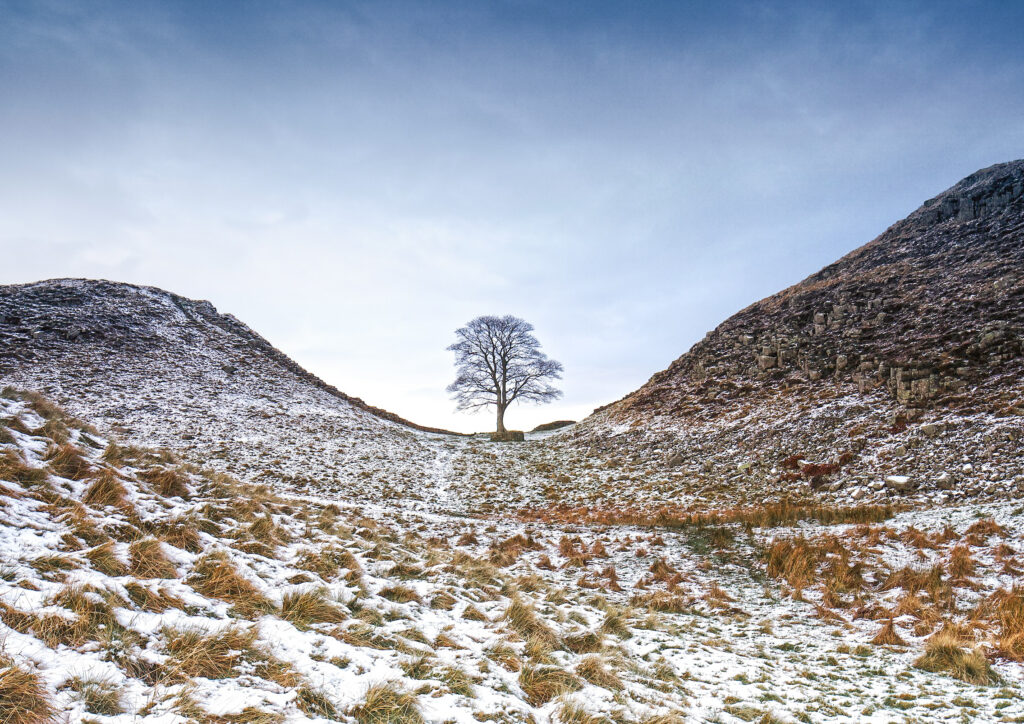
WHAT NEXT FOR SYCAMORE GAP?
The National Trust have determined that the stump of the tree is still alive, raising hopes that a new tree will – eventually – grow out of its remains. And it has been reported that the seeds and cuttings recovered from the tree have started to sprout. I very much hope I will one day be bringing The Baby here to see a rejuvenated tree. And hopefully the loss of this one tree will generate respect for the multitude of our ancient, native trees. The National Trust have preserved the remains of the tree, and are considering what to do with the wood. But perhaps the most fitting tribute would not be just to replace it with one tree, but many, all around our Isles, offering the natural landscape the chance to regenerate it so desperately needs.
Farewell old friend. You will be missed.
I have written previously about walking Hadrian’s Wall – undoubtedly one of the best National Trails the UK has to offer. I would strongly encourage you to think about paying a visit to this beautiful corner of England, and paying your respects in person to this majestic icon of Northumberland.




Leave a Reply